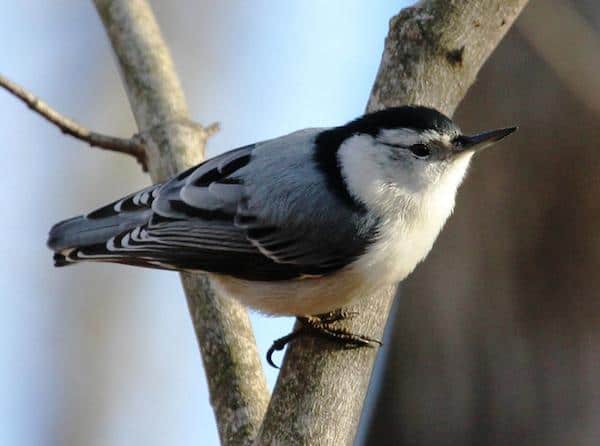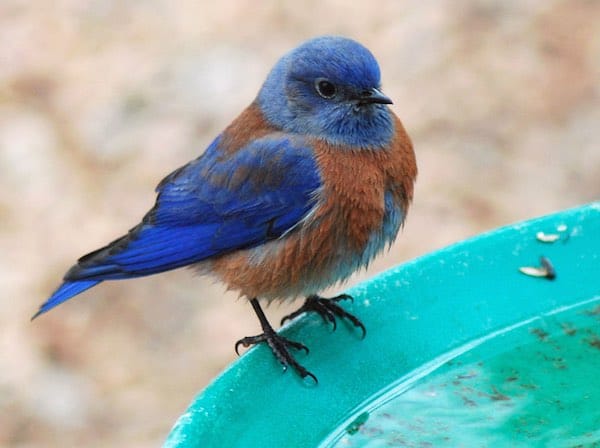Look for
Nuthatches are universally referred to as “upside-down birds,” because they forage by probing the bark of tree trunks with their heads downward. During their journeys down the trunk of a tree, they often pause, and then raise their head so that it is parallel to the ground—an absolutely unique posture among birds.
The most well-known member of the family is the white-breasted nuthatch, a bird of deciduous woods and well-treed backyards. At nearly 6 inches in length, the white-breasted nuthatch is the largest of its tribe.
Males have gray backs with black caps, white underparts, and a beady black eye on a white face. Females are similar but wear gray, not black, on their heads. White-breasteds are thick-necked and short-tailed, with a stocky appearance.
Listen for
Song is a nasal series of notes on the same tone: uhh-uhh-uhh-uhh. Birders often locate this species by the pounding sound of its bill hacking open a seed against a tree trunk or branch.
Find it
White-breasted nuthatches prefer deciduous woods, but are also found in large parks and leafy backyards. In northern coniferous woods, and at high elevations along the Appalachian chain, they are replaced by the smaller red-breasted nuthatch, while the brown-headed nuthatch displaces them in the dry pine woods of the South.
Feed it
The white-breasted nuthatch eats both insects and seeds, varying its fare with the seasons. Insects make up nearly 100 percent of their summer diet, with seeds being added in fall and winter. Autumn’s extra seeds and nuts are sometimes stashed—or “hatched away”—in tree bark crevices, to be retrieved later—a habit that has given these birds their name.
White-breasted nuthatches will come to feeders for sunflower and other seeds, or suet, but they tend to abandon backyard feeders almost entirely in spring and summer when insect prey is plentiful.
Nesting Behavior
Nuthatches maintain their pair bond and territory all year long. The nest is placed in a natural cavity, old woodpecker hole, or more rarely a nest box. Built by the female, it is a cup of grasses, bark strips, and twigs and is lined with hair.
When the nest is finished, the nuthatches “sweep” the entrance with their bills, rubbing a crushed insect against the wood—the chemicals released may aid in repelling predators. The female incubates a clutch of eight eggs for two weeks. Both parents feed the young for at least two weeks until fledging.
WOW!
A White-breasted Nuthatch performing its threat display spreads its wings and tail, stands upright with bill pointed up, and waves its body back and forth, looking like a tiny, scary vampire.




